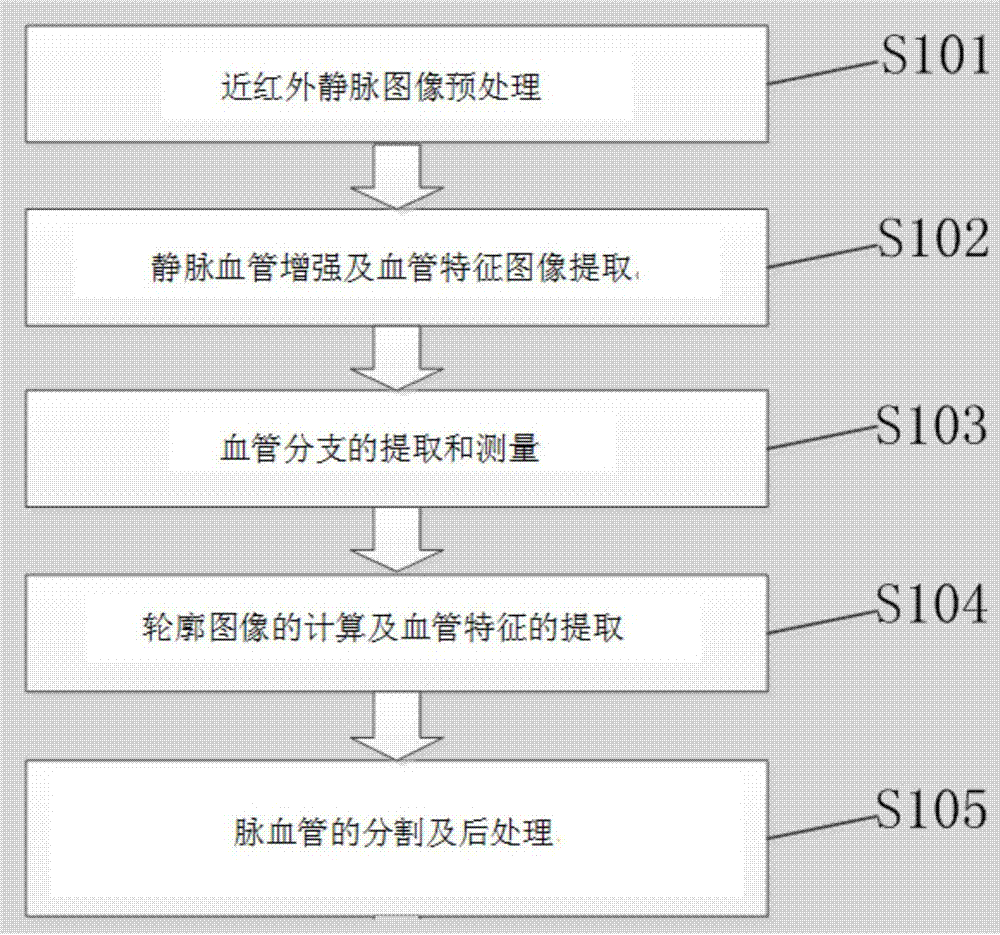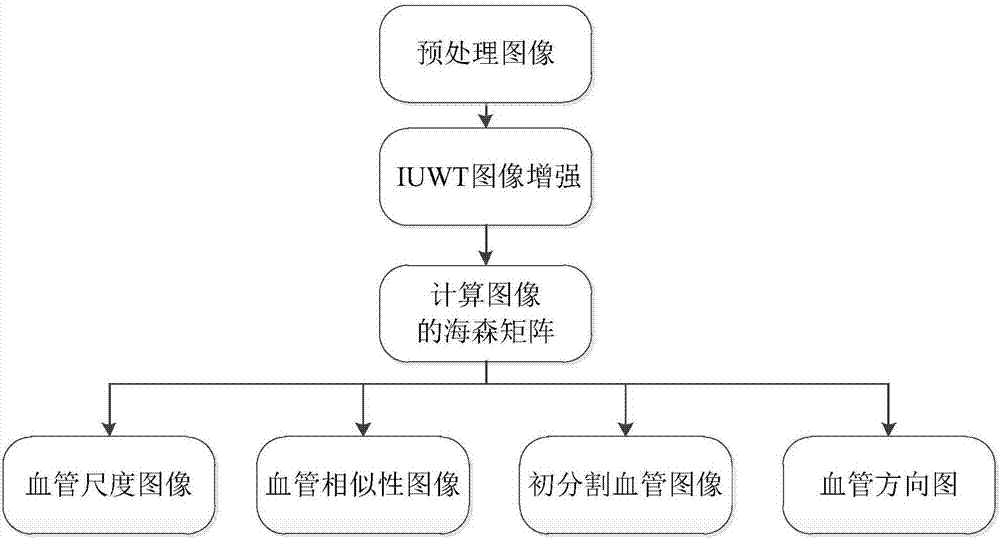Near-infrared subcutaneous vein segmentation method based on multi-feature clustering
A subcutaneous vein and near-infrared technology, which is applied in the field of vein identification and subcutaneous intravenous injection, can solve the problems of affecting the contrast of vein blood vessels, noise of segmentation results, difficulty in obtaining smooth blood vessel edges, etc., to achieve convenient special area and classification, and ensure accuracy Effect
- Summary
- Abstract
- Description
- Claims
- Application Information
AI Technical Summary
Problems solved by technology
Method used
Image
Examples
Embodiment Construction
[0026] as attached figure 1 As shown, the near-infrared subcutaneous vein vessel segmentation method based on multi-feature clustering specifically includes the following steps:
[0027] Step S101, preprocessing the near-infrared vein image.
[0028] The near-infrared vein image includes three regions: background, skin and veins. Among them, the gray value of the skin and vein area is significantly higher than that of the background area, which is reflected in the image histogram as a clear boundary between the two areas. Therefore, in order to reduce the scope of image processing and get rid of the edge influence, the present invention firstly utilizes Niblack global threshold value segmentation to obtain skin and vein blood vessel region, and its threshold value calculation is as formula (1):
[0029] Tb=Mean-b×std (1)
[0030] Among them, Mean and std are the global mean and mean square deviation of the image respectively; b is the threshold coefficient, under fixed illu...
PUM
 Login to View More
Login to View More Abstract
Description
Claims
Application Information
 Login to View More
Login to View More - R&D
- Intellectual Property
- Life Sciences
- Materials
- Tech Scout
- Unparalleled Data Quality
- Higher Quality Content
- 60% Fewer Hallucinations
Browse by: Latest US Patents, China's latest patents, Technical Efficacy Thesaurus, Application Domain, Technology Topic, Popular Technical Reports.
© 2025 PatSnap. All rights reserved.Legal|Privacy policy|Modern Slavery Act Transparency Statement|Sitemap|About US| Contact US: help@patsnap.com



